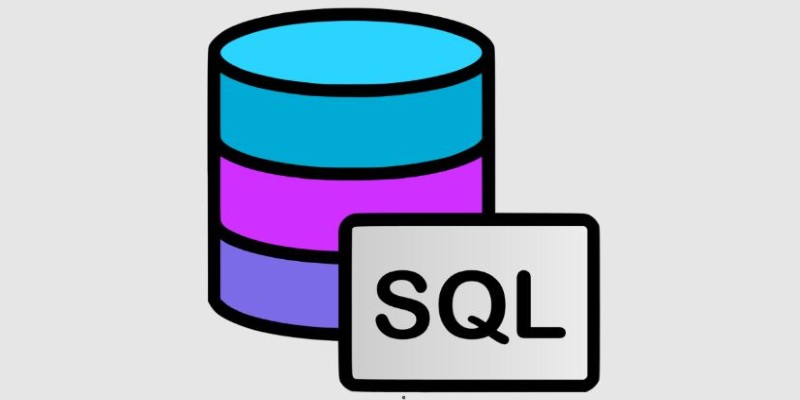Working with lists in Python is a regular thing. But when you start dealing with rows and columns, lists quickly become a pain to manage. That’s where Pandas comes in. If you’re staring at a few lists and wondering how to clean them up and stack them in a tidy table, you’re not alone.
A DataFrame is like a spreadsheet in code. It’s flexible, lets you label stuff, and makes everything easier to slice, filter, or export. There’s more than one way to build one from plain lists. Which way to use depends on what you’re working with—just a flat list, several lists, named data, or something messier. Let's break down how you can turn lists into a DataFrame.
How do you create a Pandas DataFrame from Lists?
Single List as a Single Column
If you have one list and you want it to be one column in your DataFrame, you can pass it inside another list.
import pandas as pd
data = [10, 20, 30, 40]
df = pd.DataFrame(data)
This will create a DataFrame with one column, and the values will be stacked vertically. Use the columns argument to name the column.
df = pd.DataFrame(data, columns=['Numbers'])
Now your single list looks like a column in Excel with a name on top.
Multiple Lists as Rows
If each list is a row with the same length, wrap them in another list and pass them to the DataFrame constructor.
data = [[1, 2, 3], [4, 5, 6], [7, 8, 9]]
df = pd.DataFrame(data)
This will give you a table with three rows and three columns. You can add headers if you want:
df = pd.DataFrame(data, columns=['A', 'B', 'C'])
This is useful when each sublist is a complete row of data.
Multiple Lists as Columns (Using zip)

Sometimes, you have multiple lists, each representing a column, and all are the same length. You can use zip() to combine them row-wise and then create the DataFrame.
names = ['Alice', 'Bob', 'Charlie']
ages = [25, 30, 35]
df = pd.DataFrame(list(zip(names, ages)), columns=['Name', 'Age'])
This makes combining lists side-by-side and treating them as proper columns easier.
Dictionary of Lists (Column Names Specified)
This is one of the cleanest ways when your data is already in lists, and you know what each one represents. Use a dictionary where each key is a column name, and the value is the list of entries.
data = {
'Name': ['Alice', 'Bob', 'Charlie'],
'Age': [25, 30, 35]
}
df = pd.DataFrame(data)
Pandas automatically line up the lists by index. As long as all the lists are the same length, this method works well and keeps things readable.
List of Dictionaries
Another solid method is a list of dictionaries. Each dictionary is a row, and the keys are column names. It’s readable and works well if each data point is labeled.
data = [
{'Name': 'Alice', 'Age': 25},
{'Name': 'Bob', 'Age': 30},
{'Name': 'Charlie', 'Age': 35}
]
df = pd.DataFrame(data)
This is often used when pulling data from JSON or APIs. Each record becomes a dictionary, and the whole collection becomes a DataFrame.
Using from_records with List of Tuples
You can use from_records() to build your DataFrame
if you're working with tuples instead of dictionaries.
records = [('Alice', 25), ('Bob', 30), ('Charlie', 35)]
df = pd.DataFrame.from_records(records, columns=['Name', 'Age'])
This works like zip, but it's handy when you already have a list of tuples from a function or external data.
Using from_dict with 'index' orientation
Sometimes, the data comes where each list is a row, and you want to treat the outer dictionary as rows, not columns. In that case, pass orient='index'.
data = {
0: ['Alice', 25],
1: ['Bob', 30],
2: ['Charlie', 35]
}
df = pd.DataFrame.from_dict(data, orient='index', columns=['Name', 'Age'])
Each dictionary value becomes a row; you still get readable column names.
Creating DataFrame with Index Labels

All the previous examples used default integer indexes. But if you want custom row names, just add the index argument.
data = {
'Name': ['Alice', 'Bob', 'Charlie'],
'Age': [25, 30, 35]
}
df = pd.DataFrame(data, index=['ID1', 'ID2', 'ID3'])
This is useful if you're working with unique IDs, dates, or any other label that helps identify rows.
From Lists Converted to NumPy Array
If your data is mostly numbers and you're doing math-heavy tasks, you might first convert your lists to a NumPy array, then pass it to Pandas.
import numpy as np
import pandas as pd
data = [[1, 2, 3], [4, 5, 6], [7, 8, 9]]
array = np.array(data)
df = pd.DataFrame(array, columns=['Col1', 'Col2', 'Col3'])
This works like passing a list of lists, but it's smoother if your workflow includes NumPy for performance or calculation reasons.
From List of Namedtuples
You can define a simple named tuple with field names and then create a list. Pandas will recognize the field names and use them as column headers.
from collections import namedtuple
import pandas as pd
Person = namedtuple('Person', ['Name', 'Age'])
data = [Person('Alice', 25), Person('Bob', 30), Person('Charlie', 35)]
df = pd.DataFrame(data)
This gives you a DataFrame with columns 'Name' and 'Age'. It’s clean, self-explanatory, and useful if your data comes from structured sources like database rows or certain APIs.
Conclusion
You can build a DataFrame from lists in several ways, depending on how your data is arranged. For column-based data, a dictionary of lists is clear and direct. When working with row-based values, use lists of lists or dictionaries. If you combine data from different sources, tools like zip() or from_records() help organize it. Each method serves a purpose, and choosing the right one makes your workflow smoother. Once your structure is solid, operations like slicing, exporting, or summarizing become quicker. Pandas handles the heavy lifting—you just need to shape the input to match what you want to work with.











